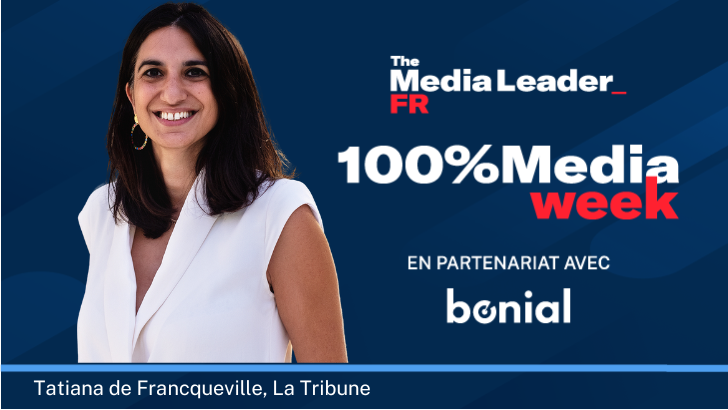Expertise
Personalization of customer offers through targeting vs. ultra-personalization through machine learning?
11 minutes

Personalization is a strategic issue for the retail sector. Initially considered as a simple tool to improve the relevance of marketing messages sent to shoppers, personalization has over time become an integral part of a successful shopping experience.
In recent years, many technological solutions have emerged to take advantage of the phenomenal amount of data available, allowing its scope to be extended to new areas, such as commercial activations, product recommendations or promotion.
When it comes to personalization, it is essential to adapt the strategy and tools used to the marketing and commercial objectives of the company: sales development, recruitment, loyalty, average shopping cart increase, category development, ROI improvement, innovation launch or cross-sell development. The common denominator of these objectives, the cornerstone of these strategies: the shopper. And a new major challenge: omnichannel.
To make it easier to understand, a classic example of personalisation could be a banner on a e-commerce website, with a promotional offer or gaming.
We will try to give you concrete answers to better understand the differences between personalisation via targeting and machine-learning, and make the right choice in the future!
What is the purpose of personalizing the customer offer and what do buyers think about it?
The promises of personalization are tempting:
- From the shoppers’ point of view, it promises a drastic improvement in the customer experience. Customers feel recognised and valued, and their relationship with the promotion is transformed, as marketing pressure becomes tolerated because it is more relevant.
- From a retail and industrial point of view, it is the promise to address the right consumers, to make them loyal to their brand and/or company and to develop their business.
Promesses gagnantes-gagnantes, d’ailleurs les clients ne s’y trompent pas selon le rapport ‘Next in Personalization 2021’ de McKinsey & Company :
Win-win promises, and customers are not mistaken, according to McKinsey & Company’s ‘Next in Personalization 2021’ report:
- Personalization matters more than ever because with COVID-19 and the rise of digital behaviors, which set the bar ever higher, 3/4 of consumers changed their consumption and purchasing habits druing the pandemic.
- As a result of these changes, 71% of consumers now expect companies to offer personalized interactions. And 76% of these same consumers say they are frustrated when it does not happen.
- Consumers don’t just want personalization, the demand it: 72% said the expect the companies they buy from to recognise them as individuals and know their interests.
- More than three quarters of consumers (76%) said that receiving personalized communications was a key factor in driving their attention to a brand, and 78% said that such content made them more likely to buy.
Personalization is particularly effective in driving repeat engagement and loyalty built over time. Recurring interactions create more data from which brands, manufacturers and other market players can design ever more relevant experiences, creating value and strong customer loyalty in the short to medium term.
72%
said they expect the companies they buy from to recognise them as individuals and know their interests.
However, this personalization can be considered intrusive and why?
Shoppers who are convinced by personalization associate it de facto with a positive experience, they react when advertisers solicit them, whether for a transactional action or an engagement such as posting a review of a product, an offer, a brand, etc.
On the other hand, there are the skeptics, those who do not want to receive (ultra)personalized messages because this would involve sharing personal data (geolocation, loyalty cards, etc.). This thorny issue emerges in a context where the type of data collected and the purpose of this collection are not always transparent. This is a major sticking point!
Marketers must be doubly vigilant because there is a fine line between what consumers perceive as intrusive and services that provide real added value. The use of shoppers’ geo-location to communicate (at the entrance to a shop or during the purchase process) and retargeting based on browsing history are the least appreciated tools. On the other hand, recommendations and personalized promotional offers are the most popular. It’s hard to know where to start!
And by the way, what is the difference between targeting and Machine Learning?
It is a combination of rules applied to previously identified consumer segments, which take into account their attributes and behaviour, in order to personalize the offer or communication for all the members of the segment.
Here is a concrete illustration of promotional targeting, with a simple rule as below
IF shopper 1 is in segment A, THEN we send him offer X.
In other words, for example, if a shopper is a regular consumer of the “sparkling water” category, we would send him the promotion “PERRIER 30% off for every 2 packs purchased”.
This approach is interesting because it allows manufacturers to rationalize their investments by distributing promotions in line with the consumer’s affinity for the brand. A consumer of a competing brand (or a non-consumer of sparkling water) will receive an aggressive offer with a high level of generosity, while a consumer loyal to the brand or category will be offered a promotion with a lower level of generosity (or no promotion at all).
One data = one potential segment
This method relies on the business knowledge of the marketing departments and the amount of data available, as well as on ‘average’ reasoning on the segments considered:
- A first limitation of this approach is to know how interesting it is to refine the segments vs. the time spent to create the set of rules and the associated promotions.
- The configuration of a campaign using several criteria quickly becomes tedious. It is necessary to have written in advance i) all the rules (IF) and ii) the associated promotional offers (THEN). With only 3 cross-criteria, the number of combinations can quickly become difficult to manage, and this for a single offer!
- Another difficulty is that it is not possible to react in real time to changes in consumer habits. Targeting is frozen in time, at least for a given period, which poses a problem in a sector of activity in which the frequency of purchases is very high and the volatility of shoppers is increasingly strong.
These limitations will make it difficult, if not impossible, to use a sufficiently large amount of data in real time to take into account all the consumer’s preferences in a very detailed way, let alone to predict his or her buying behaviour beyond an ‘average’ forecast.
It is clear that targeting alone ignores the central element of a good promotional strategy or effective communication: the consumer. Their preferences and needs are not sufficiently taken into account, which makes it impossible to create a truly personalized relationship and improve their buying experience, which are the two pillars of loyalty.
To go further, many characteristics must be taken into account – which make sense and are easily identifiable at the business level (category buyers, competing references, etc.) – but also others that cannot be identified by hand…
Personalization via Machine Learning
In contrast, personalisation via Machine Learning uses predictive analytics and optimisation algorithms to create the most relevant offers for each consumer in real time while serving the objectives of retailers and manufacturers.
Machine Learning combined with operations research provides a more effective response to personalize offers for each consumer.
- First, Machine Learning algorithms will predict the behaviour of each shopper in a variety of promotional scenarios.
- Then, operations research optimization algorithms will create – in real time – a unique promotional offer (generosity, promotional mechanics, duration of validity, message, etc.) that meets the consumer’s preferences and maximizes the objectives of the manufacturer or retailer, under budgetary constraints.
Machine Learning is the most effective way to predict shopper behaviour: Machine Learning algorithms can exploit all the data that makes commercial sense, but also “weak signals” and consumption patterns that could not otherwise be identified and exploited:
- The predictive algorithms are trained beforehand on previous data (purchase history, behavioural patterns during previous campaigns, reactions to different types of promotion). The prediction is based on factual events – or non-events.
- By design, Machine Learning models rely heavily on the data that was used to train them, and do not require ad hoc assumptions about consumer behaviour or psychology.
- This approach makes it possible to predict, with a low margin of error, because we no longer reason on average, the behaviour of shoppers when faced with a multitude of promotional scenarios.
The manual work of marketing and sales teams, creating promotional offers ex-nihilo and assigning them to consumer segments according to pre-established rules and assumptions that are by definition uncertain, is being replaced by predictive analysis that leverages the vast majority of available behavioural and transactional data.
“Targeting is a response to the needs of marketers, while personalization is a response to the needs of consumers.”
Nicolas Trannoy – Marketing & Business Insight Director Lucky cart
We are all in favour of customers receiving personalized offers that are as relevant as possible. If customer knowledge has become the focus of all attention, the challenge now is to know the shopper in his or her uniqueness. It is a question of predicting their behaviour in order to guide them, convince them and build their loyalty (and not track them!).
To achieve this, it is necessary to capture and structure data that is increasingly fragmented and coupled with Artificial Intelligence. From now on, we will talk about hyper-personalization. A real technological and cultural breakthrough for professionals in the sector, it allows them to recognise their customers and create tailor-made experiences. And to achieve this, only AI is capable of doing it!
Artificial Intelligence allows you to recognise your customers and offer them an optimal shopping experience. The challenge is to gather as much information as possible about each customer to refine their profile, while respecting all the GDPR guidelines. All of this anonymised data provides a global view of each customer journey.
As you can see, personalization is a force multiplier, a basic expectation of shoppers. The more relevant the offers, the better the business results. Brands that analyze data in depth and let themselves be guided by their customers’ behaviours are the ones that will ultimately succeed in implementing a holistic AI-driven strategy and thus meet their consumers’ expectations for hyper-personalized retail experiences.
This research is also done to maximise ROI:
In a second phase, the operational research algorithms will select, for each consumer, among the multitude of promotional offers to which he will react positively, the one that maximizes ROI – or any other modelable business objective – while respecting the allocated budgets.
The real benefit of using Machine Learning is that it removes many of the uncertainties surrounding the promotion: predicting consumer behaviour means predicting the number of units sold, the amount of incremental sales and the promotional investment, thereby reducing the risk of error, improving anticipation and facilitating the work of all promotion stakeholders. The results of each campaign, both in terms of turnover and consumer behaviour (consumers recruited, retained, reactivated, etc.) are available in real time, facilitating decision-making and eliminating the need for external consultants and expensive analyses.
“When the marketer thinks about the product he wants to promote, targeting is essential. But when retailers and manufacturers want consumer preferences and intentions to drive the creation of offers in real time, personalisation based on Machine Learning clearly appears to be the preferred solution.”
Julien Guitard – Chief Data Officer chez Lucky cart
We all know that today’s truths are not tomorrow’s, and that recent events are pushing us all to go even further. COVID 19 has been a catalyst for change, many of them, and in a way, this pandemic has proved to be a ‘test bed’, a laboratory for new uses. It was necessary to go further, to find even more innovative alternatives to ensure business at half mast.
Personalization appeared to be the right answer: it aims to adapt the communication, the offer or the service to each consumer, with the objective of giving them what they need. Nothing more, nothing less! Personalization is becoming an indispensable part of marketing strategy.
At Lucky cart, this is the core of our business, the heart of our reactor so to speak.
Our experts are engineers, data analysts, developers and many other professions whose primary quest is to use the first party data that we collect from our retail partners to provide the most personalized, fluid and effective shopper experience possible for our clients, the manufacturers and our partners, the retailers.
So, when is your next E-Retail Media campaign with our Lucky cart teams?
Sources:
*McKinsey & Company – 2021



